There are a lot of different ways to take underwater photos and videos. You can spend between 10 $ for a single-use camera to over 1000 $ just for the underwater housing for a digital SLR camera. You should opt for something in the middle.
The picture quality of single-use cameras
![]()
![]()
is bad and you don't know how the pictures look like until you get the film developed (which costs extra of course).
A waterproof bag
![]()
![]()
for an existing digital camera may sound attractive but it has some disadvantages: you can't see the display clearly, you possibly can't press all buttons and the surface of the bag often blurs the image.
Cheap waterproof digital cameras
![]()
![]()
often produce unpleasant pictures. If they can record videos they are usually of even worse quality.
Update 30 December 2015
Underwater technology has siginificantly advanced in the last couple of years. There has been a shift towards outdoor cameras which pretty much look like a regular camera, but are shock- and waterproof. No additional casing necessary!
One of the currently best reviewed models is the Olympus TG-4
![]()
![]()
.
Features
- Waterproof to 50ft (15m)- Shockproof to 7ft (2m)
- Freeze proof to 14F (-10°C)
- Sand/dustproof
- 4x Optical Zoom Lens
- 1920 x 1080-pixel full HD video
Useful accessory
- Spare battery LI-92B- Additional underwater housing PT-056 (150ft / 45m)
Casio Exilim Z77
Casio Exilim EX-Z77
![]()
![]()
and the snorkel casing Casio EWC-11
![]()
![]()
are good value for money. All underwater photos on this website are taken with this camera. The picture quality is excellent - underwater or (without the casing) on land. Due to its small dimensions the camera easily fits into every jeans pocket. Another highlight is the video functionality: due to the efficient H.264 (MPEG-4 AVC) codec you can store about 45 minutes (640x480 resolution) on a single 1 GB memory card.
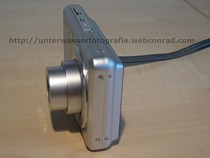
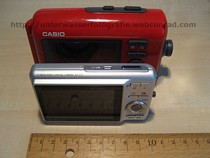
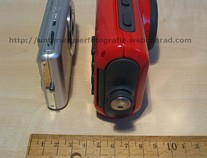
Casio EWC-11
The EWC-11 is "just" a snorkel casing which offers protection up to 3 m
(10 ft) underwater. But that's not a problem at all because it's easier to take sharp pictures (without flash) in shallow water than in deep water. The built-in flash usually illuminates floating particles in the water and they show up as bright dots in the picture. If you want to dive deeper than 10 m you'll almost certainly need an external flash. I use this snorkel casing up to 5 m underwater. But neither the manufacturer nor I can give you a guarantee that no water will enter your casing.
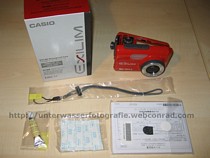
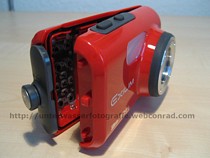
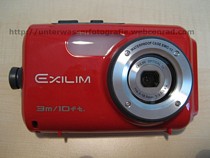
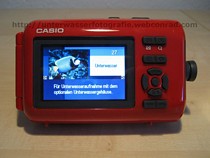
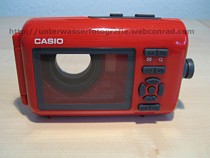
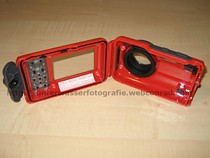
Accessories
You will probably not have the chance to backup the pictures on a computer during your holiday. Therefore it's important to use several memory cards because if water entered your casing you would only lose the images and videos of one memory card. I switch 1 GB SD cards
![]()
![]()
every three days, so that I usually take five memory cards for a 15-day trip with me.
You should have at least one replacement battery NP-20
![]()
![]()
